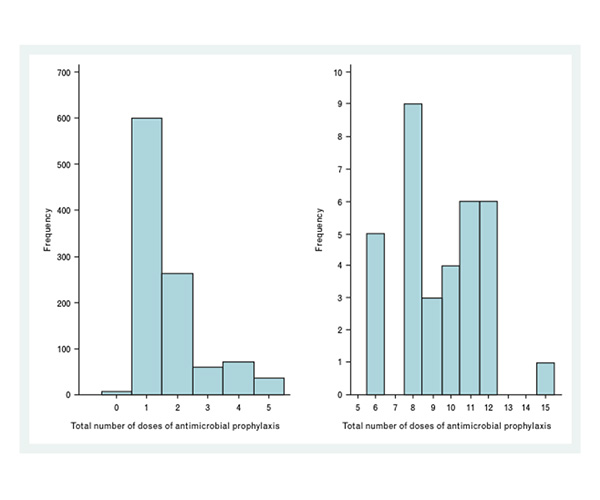SAPPHIRE Study: Safe Antimicrobial ProPhylaxis for surgery study
Background
The use of antibiotics to prevent surgical wound (surgical site) infection is an accepted cornerstone of modern healthcare. This type of infection occurs in or around the incision a surgeon makes and affects 1 in 20 patients after surgery. In the UK, we use around 7 million doses of antibiotics each year to prevent these infections. However, the evidence supporting this practice is relatively weak and predates the use of modern surgical and anaesthetic techniques that have reduced the risk of wound infections. At the same time, there is evidence that antibiotics may be causing harm, both to individual patients and to society. An estimated 1 in 50 surgical patients have a complication directly caused by antibiotics, including kidney damage, hearing loss and allergic reactions. As well as these well-known antibiotic harms, there are additional but poorly recognised problems in patients who report an antibiotic allergy. Up to 1 in 7 patients are labelled as allergic to an antibiotic, but the majority are not truly allergic to the antibiotic in question and therefore receive alternative antibiotics unnecessarily. The alternative antibiotic may be less effective in preventing surgical wound infection, while at the same time increasing the risk of side effects. For society, the widespread use of antibiotics leads to the development of bacteria that are resistant to these drugs, so-called antimicrobial resistance. This is recognised as a major global threat to public health. We urgently need to understand the risks and harms associated with preventive antibiotic use, so we can ensure the best possible use of these drugs, whilst minimising harm to patients.
Aims
To describe the relationships between preventive antibiotic use in surgery, surgical wound infection and antibiotic side effects we will:
- Assess any effect of preventive antibiotics on the frequency of wound infections after surgery
- Assess whether wound infections are more common for patients with antibiotic allergy labels
- Describe the frequency of side effects and harms of antibiotics
Methods
We will recruit 30,000 patients in 100 hospitals. Patients will be approached before surgery and asked to consent for their medical records to be examined. We will only observe what happens to patients; there will no changes to their treatment.
Expected outcomes
We expect to demonstrate:
- A weaker effect of antibiotics in preventing surgical wound infection than doctors currently expect
- A link between antibiotic allergy labels and increased infections of the surgical wound
- A significant level of harm associated with the use of antibiotics
Implications
Understanding the link between antibiotic use in surgery and patient outcomes is essential for doctors making decisions about antibiotic use for individual patients. We expect to identify important limitations in the practice of preventive antibiotic use. This work will tell us how to design a major clinical trial which would define the best way to balance the harms and benefits of antibiotics for surgical patients. It will also provide key data to demonstrate the need for such a trial to major public research funders.
Surgical site infection (SSI) affects 1 in 20 surgical patients and is an important cause of avoidable postoperative morbidity. Widespread use of antimicrobial drugs to prevent SSI is standard practice worldwide. However, evidence supporting antimicrobial prophylaxis is relatively weak, and was generated before the introduction of modern surgical and anaesthetic techniques, which reduce rates of SSI. Antimicrobials may also cause harm, with 1 in 50 surgical patients suffering complications directly attributable to antimicrobial drugs, including acute kidney injury, hearing loss and anaphylaxis. 1 in 7 patients carry a label of antimicrobial allergy, which results in the use of alternative antimicrobials that are less effective and more toxic, potentially leading to more side effects. At a societal level, the widespread use of antimicrobial drugs is the principal cause of antimicrobial resistance, which represents a serious threat to global healthcare.
We hypothesise that current practice for surgical antimicrobial prophylaxis may not be based on robust evidence of benefit versus risk.
Our research will determine whether there are 1) associations between the number of doses of antimicrobial drugs and incidence of SSI, mortality and hospital re-admission within 30 days after surgery; and 2) associations between these outcomes and the presence of antimicrobial allergy labels. Figure: Total number of doses of antimicrobial drug used for surgical prophylaxis.
Figure: Total number of doses of antimicrobial drug used for surgical prophylaxis.